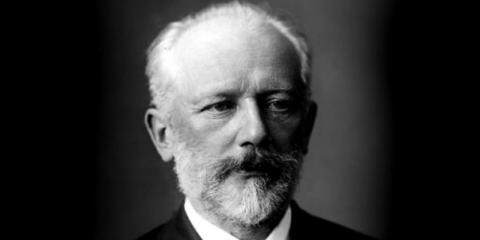MCO’s Transformations can be heard on Sunday 28 May 2:30pm at Federation Square and online via Australian Digital Concert Hall; on tour at Warragul, and Yackandandah.
Pyotr Il’yich Tchaikovsky (1840–1893)
Selections from Album for the Young Op 39 (arr Rostislav Dubinsky for string quartet)
1. Morning Prayer
5. March of the Wooden Soldiers
3. The Little Horseman / Playing Hobby-Horses
9. The New Doll
6. The Sick Doll
7. The Doll’s Burial / The Doll’s Funeral
8. Waltz
14. Polka
18. Neapolitan Song
16. Old French Song
19. Nurse’s Tale / Nanny’s Story
20. Baba Yaga / The Old Witch / The Sorceror
24. In Church
22. Song of the Lark / Lark Song
23. The Hurdy Gurdy Man / The Organ-Grinder Sings
21. Sweet Dreams
The Russian composer Pyotr Il’yich Tchaikovsky (1840–1893) was, according to theorist Boris Asaf′yev, the first composer of a new Russian type: fully professional, who firmly assimilated traditions of Western European symphonic mastery. In a deeply original, personal and national style he united the symphonic thought of Beethoven and Schumann with the work of Glinka. His work stands as a testament to the developments in Russia over the latter part of the nineteenth century.
Album pour enfants: 24 pièces faciles (à la Schumann) (Children’s Album: 24 Easy Pieces) Op 39 was composed between February and October 1878. Tchaikovsky was explicit in his acknowledgement of Schumann’s Album für die Jugend. In a letter of 30 April 1878 to Nadezhda von Meck, the composer wrote: “A while ago I thought that it would not be a bad idea to make a small contribution to the stock of children’s musical literature, which is very modest. I want to create a series of little individual pieces just for children, and with an attractive title, like Schumann’s”.
The technical demands and delightful play of melody, rhythm and texture along with the subject matter identified in the titles make them ideal pieces for young people to play. The collection was written for the composer’s seven-year old nephew, Vladimir (Bob) Davïdov.
The arranger of this set was the Russian-American violinist Rostislav Dubinsky (1923–1997), the founding first violinist of the Borodin Quartet and later the violinist of the Borodin Trio. He was Professor of Chamber Music at the Indiana University School of Music in Bloomington.
Wolfgang Amadeus Mozart (1756–1791)
Piano Concerto No 17 K453 in G major (arr Ignaz Lachner for piano and string quartet)
I. Allegro
II. Andante
III. Allegretto
Wolfgang Amadeus Mozart (1756–1791) composed piano concertos and symphonies throughout his life. The G major concerto K453 was composed in Vienna in April 1784 and possibly written for his pupil, Barbara Ployer to perform. This concerto, like the E flat major concerto K449 was dedicated to her. This concerto was the fourth of six piano concertos that Mozart wrote in 1784.
The work was originally scored solo piano, flute, two oboes, two bassoons, two horns, and strings. Today’s performance is an arrangement for piano and string quintet by the German composer and conductor Ignaz Lachner (1807–1895). Mozart arranged a number of his concertos for piano, string quartet and bass to enable them to be performed domestically. Through the nineteenth century there were numerous arrangements of the concertos, keeping the solo piano part untouched but the orchestral parts incorporated into the reduced forces of the string quartet.
There is a casual, effortlessness air in the opening movement Allegro. The slow movement that follows is marked Andante – not the expected Adagio. This is a beautiful operatic aria where we are presented with a series of dramatic pauses and key changes. The Allegretto finale is a set of five variations on a dance-like theme featuring serious changes of character and mood with the concluding utterance marked Finale Presto.
Notes: David Forrest

